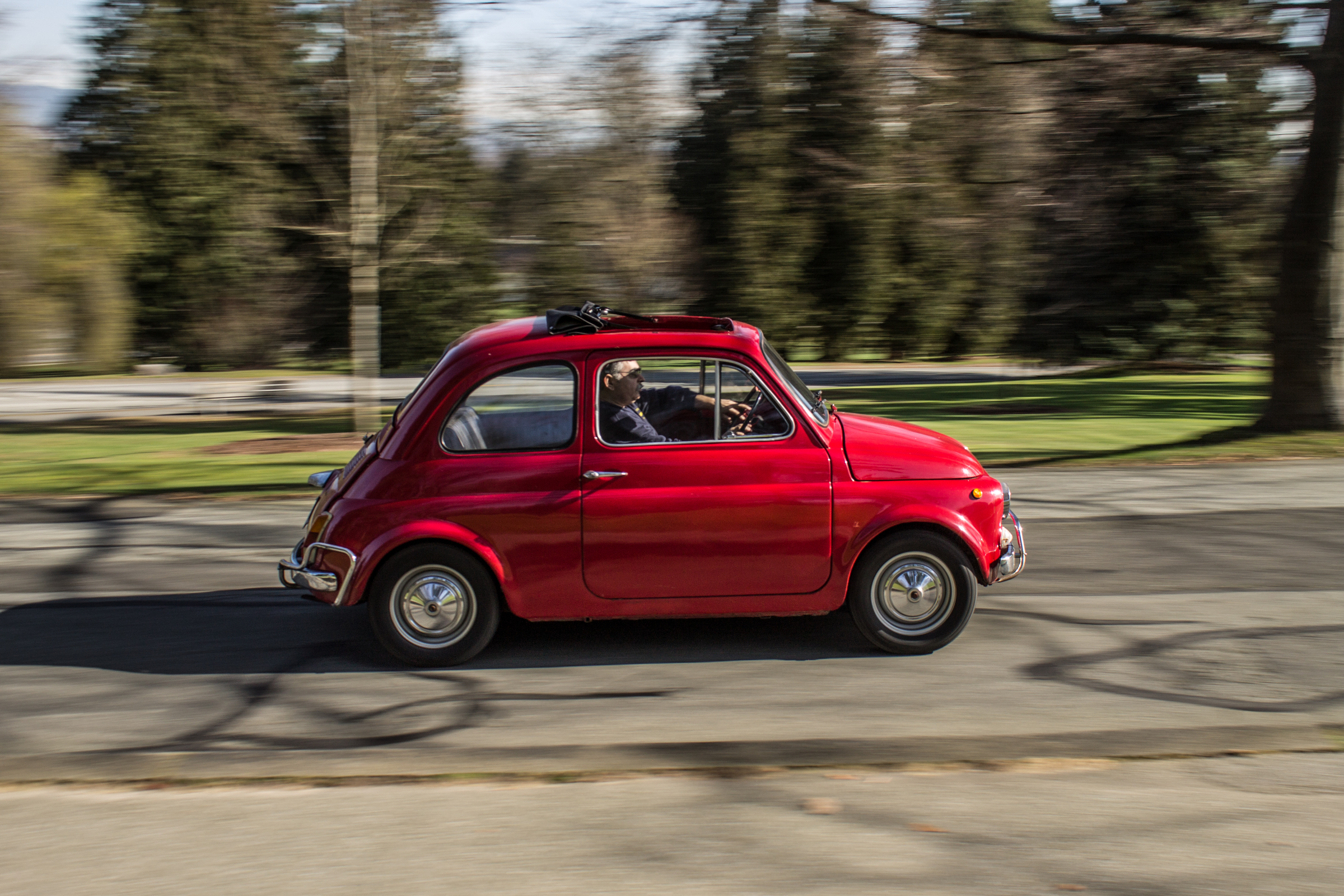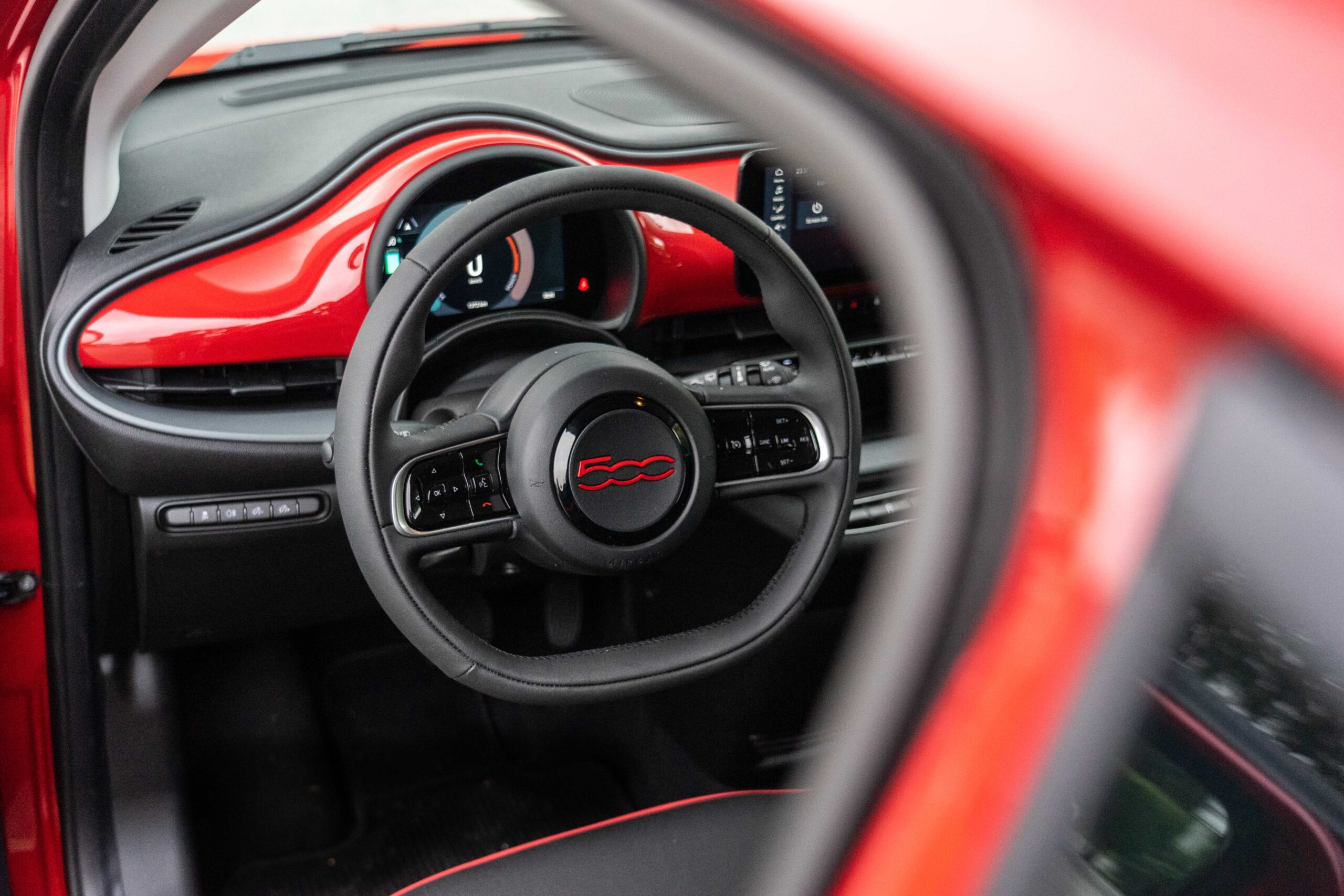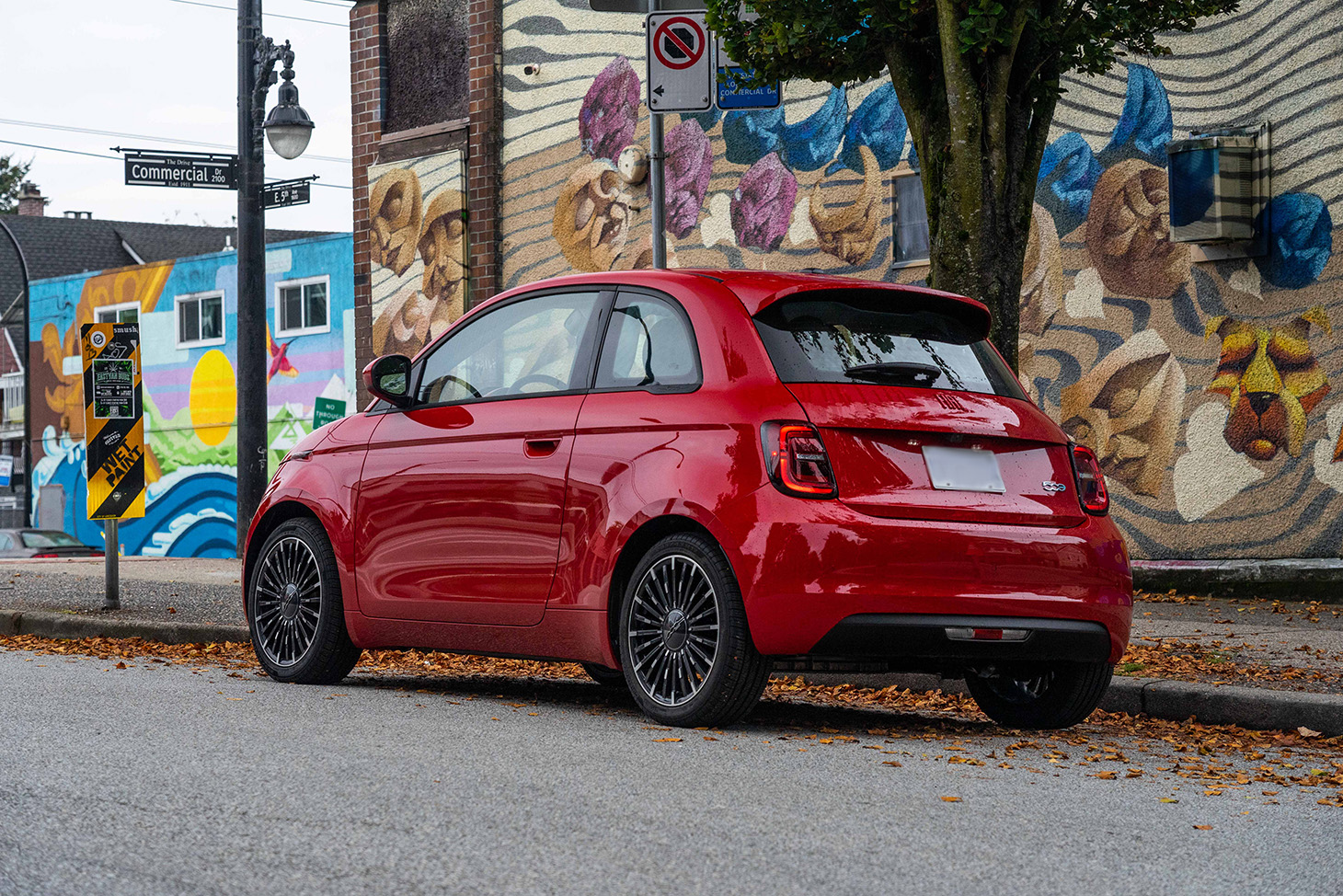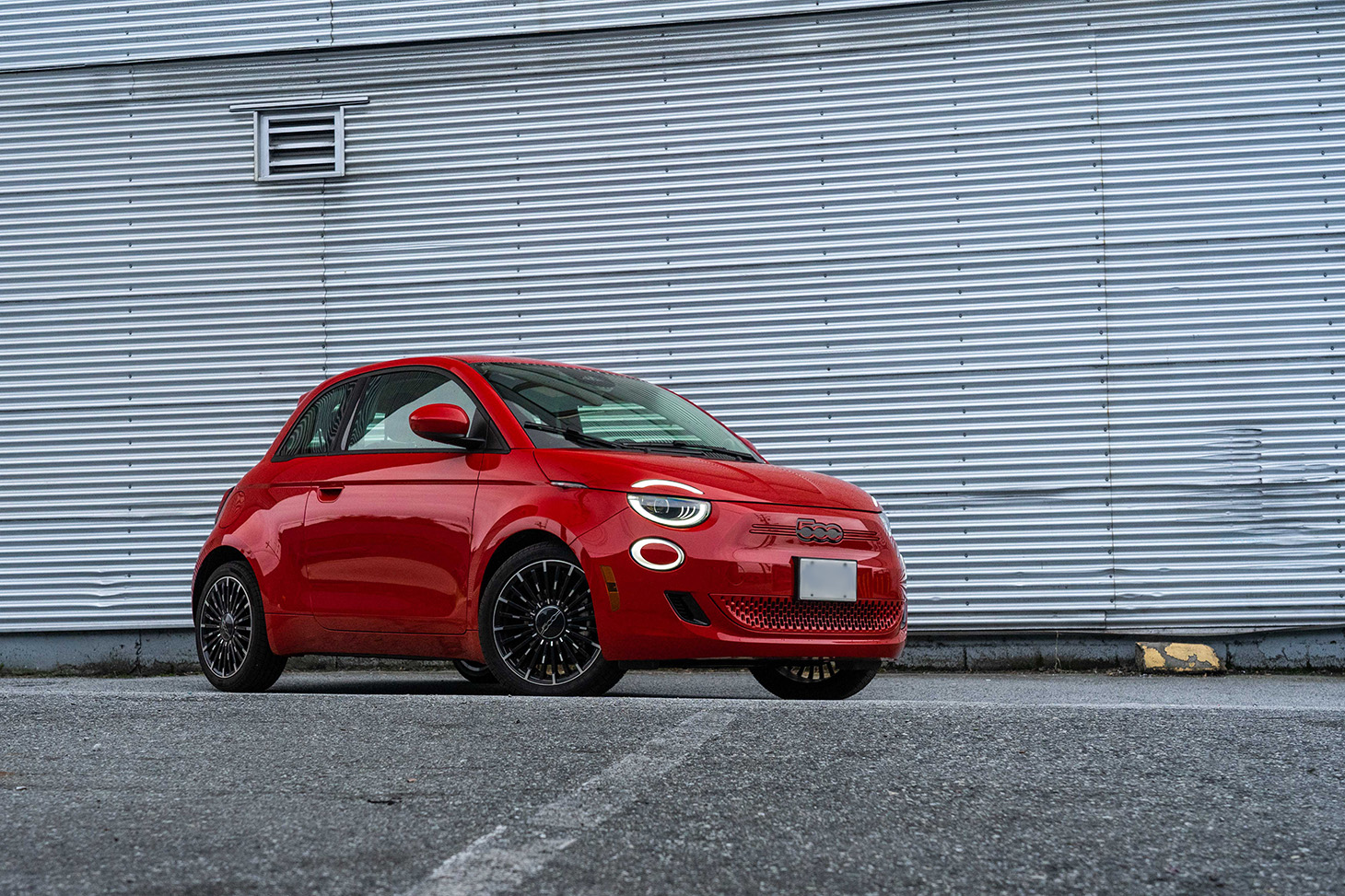On a dull and overcast day in Commercial Drive’s Little Italy, a bright-red little city car is like a ray of Mediterranean sunshine. It whirrs away from the curb without the clatter of internal combustion you might expect, scampering on past the cafés and pizzerias, the friendly look on its face something Richard Scarry might have drawn.
Cinquecento! The nickname simply means “five hundred,” but some words just sound better in Italian. This tiny Fiat is a hero car in its home country, with a lengthy heritage similar to the VW Beetle or the Mini Cooper. This one’s the new 500e, that lowercase e denoting the electric drivetrain that allows for silent whooshing around town Italian-style.
Anyone familiar with the original Fiat 500 would raise an eyebrow at how swift and silent this latest evolution is. And how expensive, the price tag knocking on the door of $40,000. But they’d recognize the familiar shape and the spirit, a practical city car with outsize flair, an effortlessly chic subcompact for the EV era.
The original Fiat 500 dates back to the late 1950s, a then-modern follow up to the Topolino subcompact car with roots in the prewar period. Called the Nuova 500 upon launch, it was Italy’s answer to the Volkswagen Type 1, with a rear-engine, rear-wheel-drive layout, and a thrifty two-cylinder air-cooled engine displacing 479cc (hence the 500 moniker—Fiat rounded up a little).

The design, while adorable, was also practical, intended to use as little sheet metal as possible to save on weight and expense. The 500 even got a standard fabric sunroof rather than a full steel roof, ideal for Italy’s sunny climate.
France had the quirky Citroën 2CV. Germany had the extremely pragmatic Beetle. The U.K. had the groovy BMC Mini. The 500 arrived as an economical runabout, and over a production run of nearly four million, became the people’s champion of Italy.
Ferrari is, of course, the best-known of the Italian marques, but it’s not like your average postwar Italian family could afford one of Enzo’s high-spirited road cars. Instead, they had to squeeze the most out of the Fiat 500’s tiny engine, which made 13 horsepower in the earliest versions and never got much higher than about 20 horsepower apart from specially tuned models. Add in an unsynchronized four-speed manual transmission, and a driver basically had to flog the 500 like Grand Prix racing champion Tazio Nuvolari just to get to the grocery store before it closed.
However, all the iconic people’s cars listed previously were about doing more with less, and that didn’t stop them becoming beloved legends. Further, with a curb weight of less than 500 kilograms, the original 500 was the sort of light and lively machine that delighted in being flung down some cobblestoned Roman street at 100 per cent of its available pace.
It became a ubiquitous part of Italian life, a sort of four-wheeled Vespa scooter. Roman Holiday featured Gregory Peck driving the older Topolino, but by the time 1969’s The Italian Job came out, more than half the traffic in the movie is Fiat 500s of various trim levels. In fact, part of the chase scene in that movie takes place on the rooftop test track of the Lingotto factory, where many a Fiat 500 circled as a last quality test before being delivered to dealers.
And, like the original Mini, there was even a slightly hotter version. Specialist tuner Abarth performed much the same tricks as did Cooper in the U.K., the latter to build the Mini Cooper. The Abarth versions of the 500 featured scorpion badges and a sting in the tail, with double the horsepower from that rear-mounted engine.
The original Fiat Cinquecento was many Italians’ first car, the car for the family vacation, the car many learned to drive in. It was also a vehicle without class distinction, driven by people from all walks of life. A Ferrari was fine for the open road, but squeezing down a narrow alley built in medieval times was a job for something much smaller. The 500 was as simple as it gets, but a simple life was sweeter. La dolce vita.
By the time it went out of production in 1975, the 500 was a universal automotive symbol of Italy. While it’s perhaps a bit slow and small for modern traffic, it’s still a beloved collector car. And still useful too: Tutti Gravel Inn, a bicycle touring company based in B.C.’s Cariboo region, uses a 1977 Fiat 500 Giardiniera fitted with a custom bike rack as its cycle chase car.
Perhaps seeing BMW’s success in relaunching Mini as a brand in the early 2000s, Fiat brought a retro-modern 500 back to North America in 2011. Available in various trims, including a surprisingly feisty turbocharged Abarth version, it sold reasonably well at first, then sales dried up. Small cars, even ones with nostalgic charm, are a shrinking market, and even the 500X crossover was eventually discontinued.

This new 500e aims to keep the 500’s story going into a new era. Compared to the million-selling mass appeal of the original, it’s a niche product for sure. Despite the clamour for more affordable EVs, the average price for a new car in Canada rose to more than $65,000 last year, and those buyers are mostly getting crossovers. A city car seems like a smart idea, but North American roads are built around being able to drive a pickup truck right through downtown. With a battery range of a little over 200 kilometres, the 500e is also not a car intended for long-distance touring.
But Mazda still builds its MX-5, Ford is still cranking out the Mustang, and Jeep sells plenty of two-door Wranglers. A niche market is still a market, and while the masses might not be beating a path to Fiat showrooms, the 500e is wonderfully satisfying to drive.

It’s quicker than the original ever was, nimble and lively, with a small turning circle for quick maneuvering. That friendly face has every passerby smiling and other drivers letting you slot into traffic from a side street. The cabin seats four at a pinch, though you’ll have to be good friends to all fit. It’s great.
Still built in Turin, the 500e keeps the wheels of a beloved Italian icon rolling. The simple life can be hard to pin down these days. For a select few, however, less really can be more.









